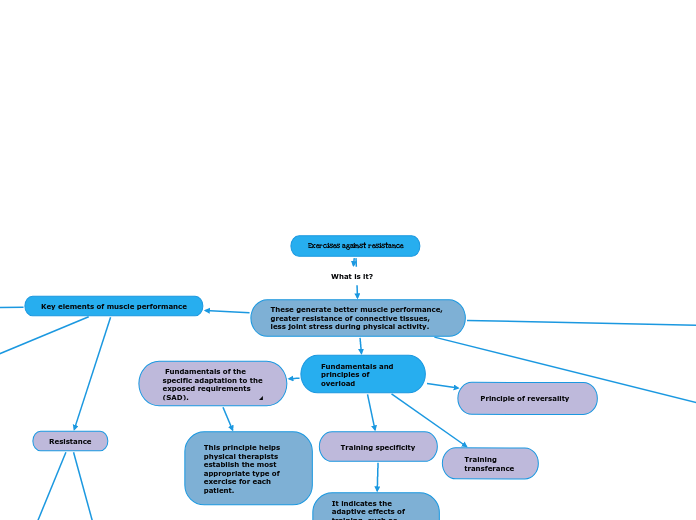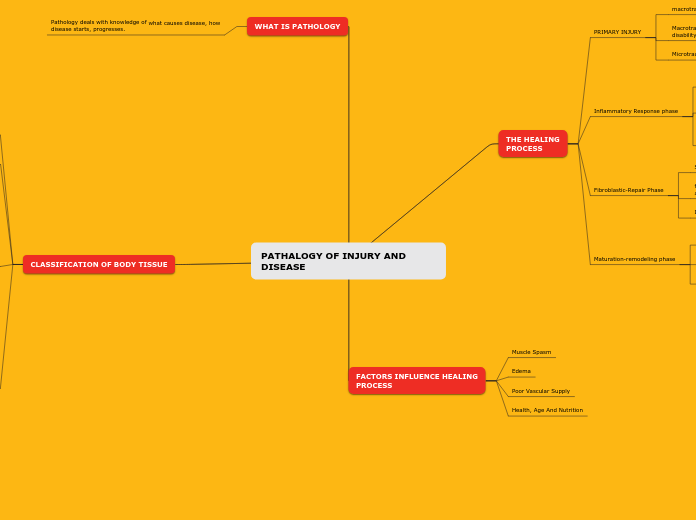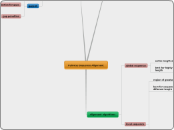These generate better muscle performance, greater resistance of connective tissues, less joint stress during physical activity.
Determinants of anti-resistance exercises
Alignment
Alignment and gravity
It underscores important for the realization of some exercises, such as the use of dumbbells and bars.
Muscle alignment and action
It is determined by the direction of the muscle fibers and the line of traction that follows the muscle movement.
Intensity
Volume
Almost maximum or maximum loads
It is used to increase muscle strength and power.
Submaximal exercise load
Beginning of a training program, to improve muscle performance and when warming up or cooling the muscles.
Order of exercises
You should start with the training of the largest muscles and then move on to the smallest and first by the multi articular and then the uniarticular.
Frequency
Number of training sessions per day or week, the greater the intensity and volume of the exercise will be required, the longer the recovery time.
Duration
It is defined according to the cause of muscle involvement
Rest intervals
Purpose of the rest interval integration of rest in the training program
Types of resistance exercise
This will depend on the cause and severity of the primary and secondary condition, the compromise of muscle function and tissue healing stage must be taken into account.
Types
Against manual resistance
The physiotherapist himself applies resistance, this technique is useful in the early stages of the training program.
Against mechanical resistance
A specially designed appliance or device is used to apply resistance.
Isometric exercise
Multi-angle isometric exercises
Set of exercises in which resistance is applied, either manually or mechanically to different joint positions, improvement in strength throughout the joint amplitude.
Stabilization exercises
It is used in order to achieve a submaximal contraction and maintained over time, improves the postural or dynamic stability of the joint.
Static exercises
They are used to reduce muscle pain and spasm and to promote relaxation and circulation during the acute stage of soft tissue healing.
Dynamic exercise - concentric and eccentric
Key elements of muscle performance
Power
Power training
- Strength is indispensable to obtain power.
-Demand of the muscle, so that it makes a greater effort in the same period of time.
-The higher the intensity of the exercise and the shorter the time to generate the force, the greater the power.
It is the rate at which the muscle contracts and produces a resulting force and the relationship between strength and speed, are factors that affect muscle power.
Power Anaerobic
The body's ability to use ATP during short-duration, high-intensity physical activities.
Power Aerobics
Ability of the body to maintain sustained activities with a little effort, little fatigue, and with a quick recovery.
Strength
Strength Functional
The ability of the neuromuscular system to produce or control forces, voluntary or imposed.
Strength brawn
It is the maximum measurable force that a muscle or muscle group can produce to overcome a resistance in a maximum effort group.
Strength training
-Fundamental component in rehabilitation
-Systematic activity of a muscle or muscle group
Resistance
Resistance training
Key elements:
Low intensity muscle contraction, increased repetitions and period of time.
- The muscles adapt to resistance training by increasing their oxidative and metabolic capacity.
Ability to perform repetitive or constant low-intensity activities for an extended period of time
Resistance brawn
Resistance Cardiorespiratory
Fundamentals and principles of overload
Training transferance
Training specificity
It indicates the adaptive effects of training, such as increased strength, power and muscular endurance.
Principle of reversality
Fundamentals of the specific adaptation to the exposed requirements (SAD).
This principle helps physical therapists establish the most appropriate type of exercise for each patient.
Exercises against resistance
What is it?









